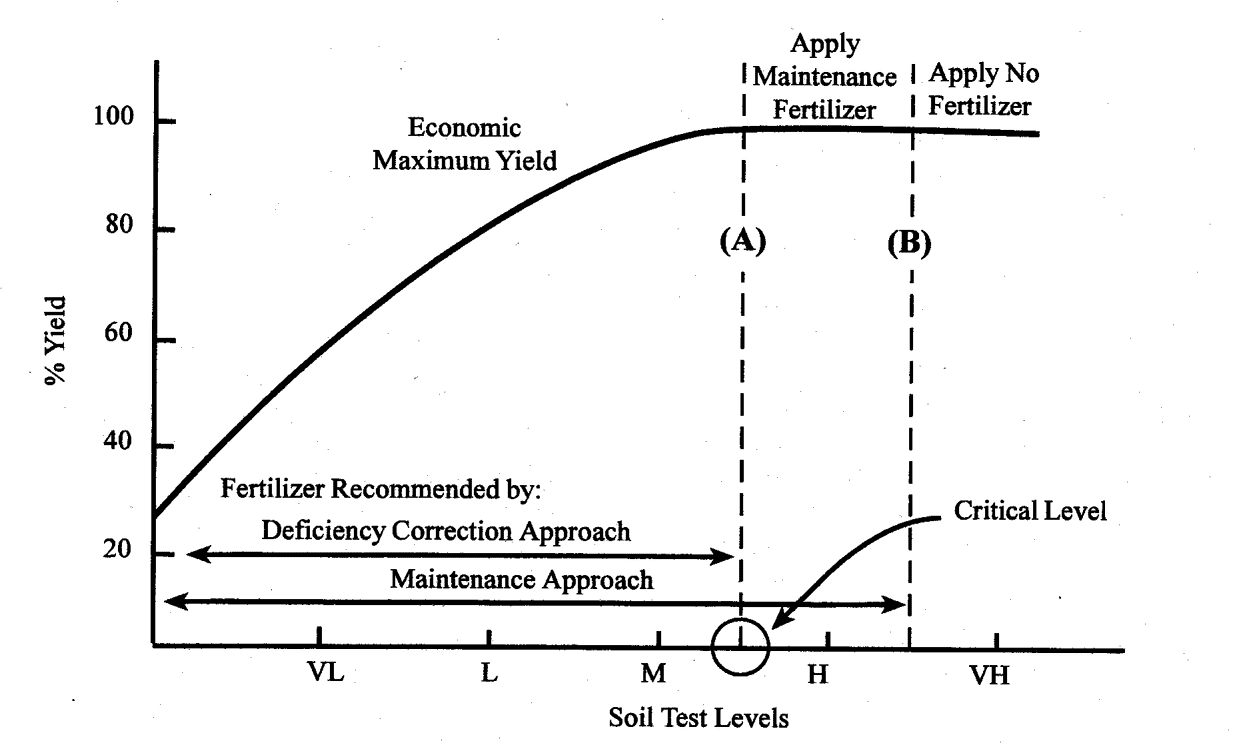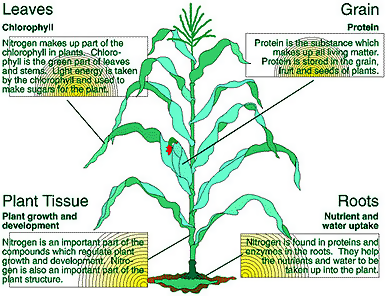October 14, 2020 at 1:13 am | Updated October 14, 2020 at 1:13 am | 7 min read
Farm Fertilizer – A Double-Edged Sword
The excessive use of fertilizers is one of the main causes of the environmental impact of industrial agriculture. The notion that more is better has caused more harm than good to farming, as well as the environment. Therefore, using the right amount of fertilizers is considered an important part of farm management. To this end, there has been a lot of research to see how the efficacy of fertilizer use can be improved.
Important Nutrients for Crops
Many minerals are necessary for plant growth, and their addition as supplements can improve quantity of yield. Nitrogen (N), phosphorus (P), and potassium (K) add major nutrients since they are needed in bulk. The other minerals, which are micro-nutrients, are used by the crop in trace amounts and are also important. Their deficiency can affect plants and make them more susceptible to pest and disease attacks. However, it is the major nutrients which are the focus of monitoring most of time.

Subscribe to the CID Bio-Science Weekly article series.
By submitting this form, you are consenting to receive marketing emails from: . You can revoke your consent to receive emails at any time by using the SafeUnsubscribe® link, found at the bottom of every email. Emails are serviced by Constant Contact
Plant and Soil Science Lab (Image credits: http://passel.unl.edu/pages/informationmodule.php?idinformationmodule=1130447047&topicorder=2&maxto=6&minto=1)
Impact of Over-using Fertilizers
The addition of chemical fertilizers in a quest to boost yields, however, has resulted in widespread pollution of land, water, and air. When concentrated chemicals are added, plants are not able to assimilate all of them in a short time. A large proportion of the fertilizers seep into the soil or are lost as runoff. As a result, there are negative consequences for the farm and environment.
- Farms: The extra chemicals seeping into the soil can kill beneficial microflora and microfauna. Since these are involved in cycling nutrients, the soils are left impoverished. As a result, increasing amounts of fertilizers have to be used in subsequent years. Figure 1 explains how using more fertilizers than needed has no benefits.
- Environment: Runoff loaded with nitrogen and phosphorus, causes eutrophication that produces dead zones in the sea, kills aquatic life in ponds and rivers, and contaminates ground and drinking water.
Cost of Fertilizers
Besides causing environmental havoc due to excessive application, fertilizers also increase the expenditure of farmers without providing any returns (See Figure 1).
Chemical supplements, or even natural equivalents in terms of organic matter, are expensive. It is, therefore, in the best interest of farmers to ensure that they are supplying fertilizers in amounts that their crops can use without too much wastage.
Fine-tuning Fertilizer Use
Nutrients can influence different aspects of plant growth; research has shown that, by monitoring them, we can track the effect the nutrients are producing. Many small hand-held tools already available on the market incorporate tested technology to track how plants absorb and use various nutrients. Some of the methods and the tools used to track the three major nutrients are described below.
Photosynthesis as a Measure of Nitrogen
Nitrogen is found in chlorophyll, the green pigment in leaves, which plants use in a process called photosynthesis to manufacture their food. Chorophyll is used to capture sunlight, which is used to combine carbon dioxide and water to produce simple sugar. Photosynthesis produces 75 to 95% of a crop’s dry weight
Nitrogen is also a very important part of amino acids and proteins, which are used in structural components in above and underground plant parts or in enzymes for plant functioning. It is also part of the nucleic acids in the genetic matter.

Nitrogen assimilation in plants. (Image credits:https://extension2.missouri.edu/wq259)
As nitrogen is present in chlorophyll, the amount of radiation that is intercepted can be used to measure this nutrient. The amount of photosynthetically active radiation (PAR) in solar light falling on the canopy above plants and the radiation that manages to reach below the canopy can be used to measure the amount of solar energy which is used for photosynthesis.
In one study on maize in China, the effect of density and amounts of fertilizers were tested by using the digital CI-110 Plant Canopy Imager produced by CID Bio-Science.
The CI-110 Plant Canopy Imager uses a self-levelling camera with a hemispherical lens, mounted on a long arm to take images of the canopy. The 24 PAR sensors on the arm record the light from sun flecks. The instrument immediately calculates Leaf Area Index (LAI).
The solar light intercepted by the canopy was measured at different stages of the crop. As nitrogen levels increase, there is an increase in leaf area index (LAI) and more absorption of light. At high levels of N application, however, the LAI dropped, along with yields from the crop.
Monitoring Root Development to Track Phosphorus Utilization
Phosphorus is important as it is one of the components of DNA that make up genes, and it is necessary for energy transfer. It improves the quality of crops, increases root development, makes stems stronger, and produces more yield.
Most of the phosphorus that is applied is quickly fixed into insoluble compounds that plants cannot use. As a result, plants usually use only 20% of phosphorus provided to the soil. Therefore, it is necessary to manage its use by plants.
Plants absorb phosphorus mainly through diffusion, i.e., the movement from areas of high concentrations to low concentrations. A healthy and well-developed root system, with many long roots and root hairs, is crucial to reach more phosphorus. Roots grow longer in portions of the soil that have more phosphorus to reach it; in P-deficient soils, longer and denser root hairs occur. This root architecture is used to find out the distribution of phosphorus.
The minirhizotron method is popularly used as it is non-destructive, and it is suitable for long term monitoring of crops. Holes are drilled in the field near a plant, in which transparent tubes are inserted and left in the field. As the plant grows, its roots develop around the tube. Periodically, the minirhizotron, which consists of a long handle with a camera at the end, is inserted in the tube to take images. Accompanying software calculates the average length, diameter, and number of roots.
Of all the methods of tracking root growth, this is the best. The CI-600 In-Situ Root Imager and CI-602 Narrow Gauge Root Imager are two minirhizotrons developed by CID Bio-Science that provide high-resolution scans. Both have tubes that are one meter deep; the difference is in the diameter of the CI-602, which is narrower.
For example, minirhizotron was used in a study of conservation farming, using broadcast, band, with and without starter application of phosphorus, to show that over the years, the broadcast system produced greater root length at all depths. This suggests that broadcasting fertilizers can lead to better phosphorus utilization.
Leaf Area Measurements Track Potassium Use Efficacy
Potassium regulates the opening and closing of stomata in the leaves, thereby controlling important functions such as photosynthesis, respiration, and transpiration. It controls the movement of water and nutrients within the plant. It is also needed to regulate functioning of many enzymes that affect production of proteins and occurrence of photosynthesis. Without this essential nutrient, plants can be stunted and give less yield.
There is, in fact, a lot of potassium in the soil, but it is in insoluble forms that plants cannot use, which is why they need to be supplied through fertilizers. Many important soil factors, such as aeration, moisture content, temperature, and tillage method can influence potassium uptake.
Plant growth parameters, such as plant height and leaf area, can be used to measure potassium use. Leaf area can be measured by simple field tools, such as the CI-203 Laser Area Meter. Scientists in Iran used this leaf meter to show that increasing potassium could ensure better use of irrigation, reflected in improved leaf area after seven and fourteen days of planting.
The CI-203 Handheld Laser Leaf Area Meter, produced by CID Bio-Science, is a non-destructive means to record leaf area. The leaf meter can be swept over leaves of any shape and size; a laser beam and optical sensor scan the leaves to give its graphic outline. The instrument then delivers length, width, perimeter, area, and shape factor of the leaves. Each leaf measurement takes only a few seconds.
Increasing Fertilizer Efficacy
By using modern precision tools, scientists can follow the exact effect of the fertilizer they provide by monitoring crop growth and health frequently. As a result, they can give more detailed information to the farmers on the judicious use of chemical or natural crop nutrients to save them unnecessary expenses. The farmer can optimise crop growth and yield, while maintaining the health of the soil, ultimately making the farm and business more sustainable and environment-friendly.
—
—
Vijayalaxmi Kinhal
Science Writer, CID Bio-Science
Ph.D. Ecology and Environmental Science, B.Sc Agriculture
Featured img credit – Benkataro
Sources
Al-Shaheen, M.R., Soh, A., & Ismaaiel, O.H. (2016). Effect of Irrigation timing and Potassium fertilizing on the some growth characteristics and production for Mungbean (Vigna radiata L.). International Journal of Scientific and Research Publications, 6:525-528. Retrieved from http://www.ijsrp.org/research-paper-0316/ijsrp-p5183.pdf
Arcipowska, A., Mangan, A., Lyu, Y., & and Waite, R. (2019, July 29).5 Questions About Agricultural Emissions, Answered. Retrieved from
https://www.wri.org/blog/2019/07/5-questions-about-agricultural-emissions-answered
DeFelice, K., Wollenhaupt, N., & Buchholz, D. Nitrogen in the Plant. Retrieved from https://extension2.missouri.edu/wq259
Gai, Z., Zhang, J., & Li, C. (2017). Effects of starter nitrogen fertilizer on soybean root activity, leaf photosynthesis and grain yield.PLoS ONE 12(4): e0174841. https://doi.org/10.1371/journal.pone.0174841
PennState Extension. Managing phosphorus for crop production. Retrieved from https://extension.psu.edu/programs/nutrient-management/educational/soil-fertility/managing-phosphorus-for-crop-production
Shi, D., LI, Y., Zhang, J., Liub, P., Lui, P., Zhao, B., & Dong, S.
(2016). Increased plant density and reduced N rate lead to more grain yield and higher resource utilization in summer maize. Journal of Integrative Agriculture, 15: 2515–2528. DOI: https://doi.org/10.1016/S2095-3119(16)61355-2
Sindt, M. R. (2015). Impact of phosphorus placement on corn rooting dynamics under long-term strip-tillage. Kansas State University. Master Thesis. Retrieved from https://cid-inc.com/publication/impact-of-phosphorus-placement-on-corn-rooting-dynamics-under-long-term-strip-tillage/
University of Minnesota Extension. Potassium for crop production. Retrieved from https://extension.umn.edu/phosphorus-and-potassium/potassium-crop-production#soil-moisture-598160.
Related Products
Most Popular Articles
- Transpiration in Plants: Its Importance and Applications
- Leaf Area – How & Why Measuring Leaf Area…
- How to Analyze Photosynthesis in Plants: Methods and Tools
- The Forest Canopy: Structure, Roles & Measurement
- Plant Respiration: Its Importance and Applications
- Forest & Plant Canopy Analysis – Tools…
- Stomatal Conductance: Functions, Measurement, and…
- Root Respiration: Importance and Applications
- The Importance of Leaf Area Index (LAI) in…
- Irrigating with Saline or Seawater






